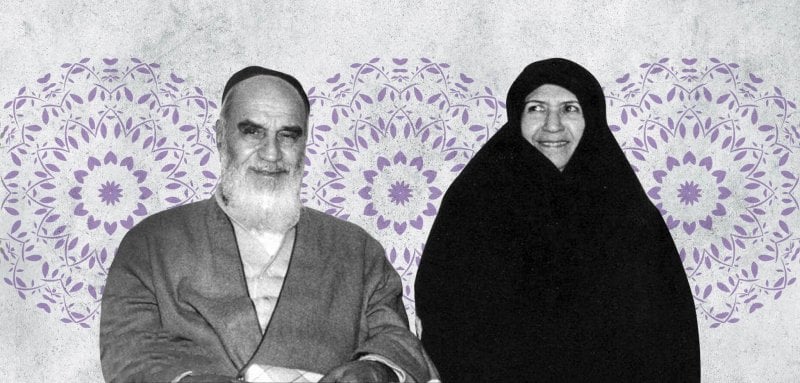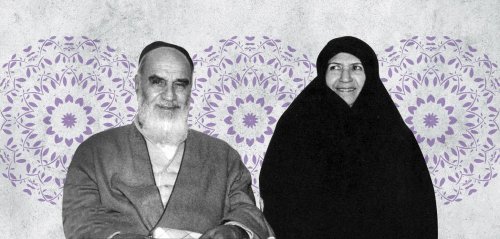“My beloved. Ever since I was separated from my dear sweetheart and my pillar of confidence, I have always remembered you, and your beautiful face is etched in my heart. My darling, may Allah keep you safe and sound in His protection! I hope that you are healthy and happy. Although things may be a little unpleasant, I am getting along; and thank God, whatever has come about so far has been good, and now I am in beautiful Beirut. I truly wish you were here. The scenery of the city and the sea are so pleasant. Alas, my lovely darling is not here with me; so how enjoyable could the scene be. Lovingly yours.”
Who is this beloved, whom the leader of the Iranian Islamic Revolution Ruhollah Khomeini, speaks to in such a manner, in a letter he wrote in Beirut while he was on his way to Mecca to perform Hajj in March 1933?
From birth to marriage
Khadija Saqafi, also known as “Quds-Iran” (or ‘the Grand Lady of Iran’), was born in 1913 in Tehran to a wealthy family. Her father Mirza Muhammad Saqafi was a respected cleric, and her grandfather Mirza Abulfazl Tehrani was a scholar and one of the most prominent figures of Tehran. Her grandmother was the daughter of the Treasury Minister in the court of Nasser al-Din Shah Qajar, and was dubbed “Khazan al-Molouk (The Treasurer of Kings)” for this reason. Under her original name “Khanum Makhsous”, the grandmother had vast wealth.
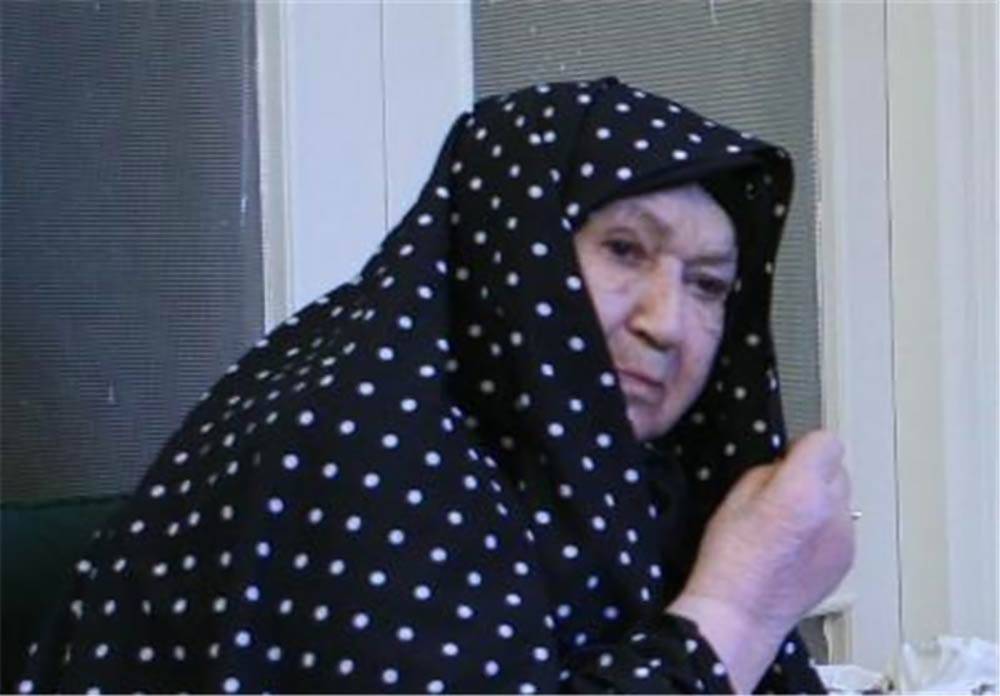
Khadija was her parents’ first child, and lived her childhood with her grandmother, to keep her company and ease her loneliness. When she was nine years old, her family moved to the city of Qom, where her father decided to continue his religious studies at the Islamic Qom Seminary (hawza), and Khadija stayed with her grandmother. She spent her childhood and adolescence in luxury and comfort that few children — especially girls in that period — knew.
She neither wanted to be in Qom nor marry a cleric. In one of her interviews, Khadija Saqafi said: “The clergymen are poor and their treatment of women wasn’t so good”.
Khadija’s voice could be heard describing that period of her life in the documentary film “The Grand Lady of Iran”, which was produced a few years ago by the Iranian director Mostafa Razzaq Karimi about Khadija’s life in Iran: “At the time, the school where modern lessons were taught had a class of only 20 students. There were very few people who could pay 5 rials a month to attend the school, so only the daughters of doctors, businessmen, or wealthy figures would go to school. When I was a child, I used to get everything I wanted. Foreign brand shoes were brought to me at a price of 6 tomans. A driver would take me anywhere I wanted in a private vehicle. I also had a maid who did all my work. Every time I showered, new clothes were sewn for me by our private seamstress. I had a private tutor to teach me French.”
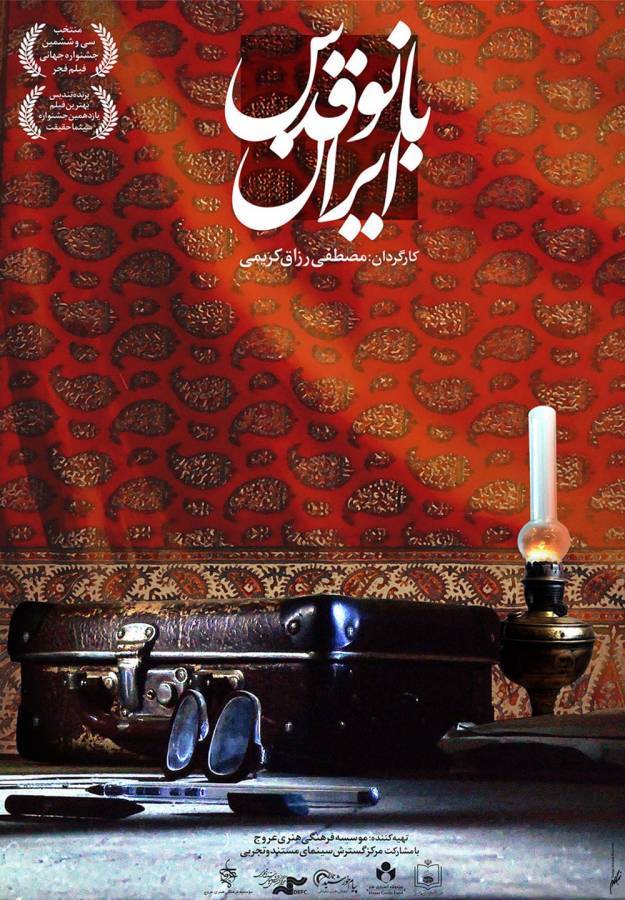
Khadija did not like the city of Qom. Once a year, she and her grandmother would travel there to see her family, and then she’d quickly return to Tehran that she dearly loved because of its modernity and vibrancy. On one visit to Qom with her grandmother, her father told her about a young man who had asked for her hand in marriage.
The young man was a friend of her father’s in Qom, a student reading religious studies. The story of Khadija and a young Ruhollah Khomeini began when Ahmed Lawasani, a mutual friend of Khadija’s father and Ruhollah, asked him why he had not yet gotten married even though he was 27 years old. Ruhollah replied: “I have not yet found a suitable wife, and I did not want to marry a young woman from my city of Khomein.” Lawasani told him that Ayatollah Mirza Saqafi — “our friend”, — had two daughters with a good reputation, so go ask for the hand of one of them. Then Lawasani spoke to Khadija’s father on the matter. The father was already fond of Ruhollah, for, in his eyes, he was a polite young man interested in science and religion. So he conveyed the request to his daughter Khadija, but she refused, saying, “I would not marry a mullah (a religious man)”, in her exact words.
For two months, and on several occasions, Lawasani visited the house of Khadija’s family in Qom to mediate and obtain her approval for the marriage, and every time Khadija refused, even after she secretly saw him during one of his visits to their house to ask for her hand, because she didn’t want to live in Qom and did not want to marry a cleric. In an interview, Khadija said, “The clergymen at the time were poor, and their treatment of women wasn’t so good.” For her part, her grandmother was planning to have Khadija marry the son of one of her wealthy relatives who had been studying in France, so she in turn, refused Khadija’s marriage to Ruhollah.
But a dream that Khadija had, changed everything; She saw that the Prophet Muhammad, the Imam Ali, and the Imam Hassan were sitting in a house, which Khadija later said was the same house she got married in. She recounted the dream to her grandmother, and her grandmother said that she should marry Ruhollah, seeing the dream as a sign to accept the marriage to Ruhollah Khomeini.
Marrying Khomeini and a difficult life
Based on her father’s wishes and what she saw in her dreams, the girl who was born and raised in a wealthy family in Tehran, who never wanted to be the wife of a cleric, married Khomeini in Ramadan of 1929. Khadija stayed with her husband in Tehran for one month then moved with him to Qom.
“The entire way from Tehran to Qom, I kept crying, and Ruhollah was telling me: You have to be patient and endure!... I knew that I would never again see comfort in my life from that point forward, and that my beautiful days in Tehran were over. I left behind Tehran, its beautiful streets, its elegant women, and I came to gloomy Qom, with its narrow streets, and its residents who wore the same clothes. The women there would walk in their black chador (religious garment) that had no visible front or back, and the men in their turbans and worn out cloaks”. This is how Khadija describes the city of Qom at the time and those first moments there.
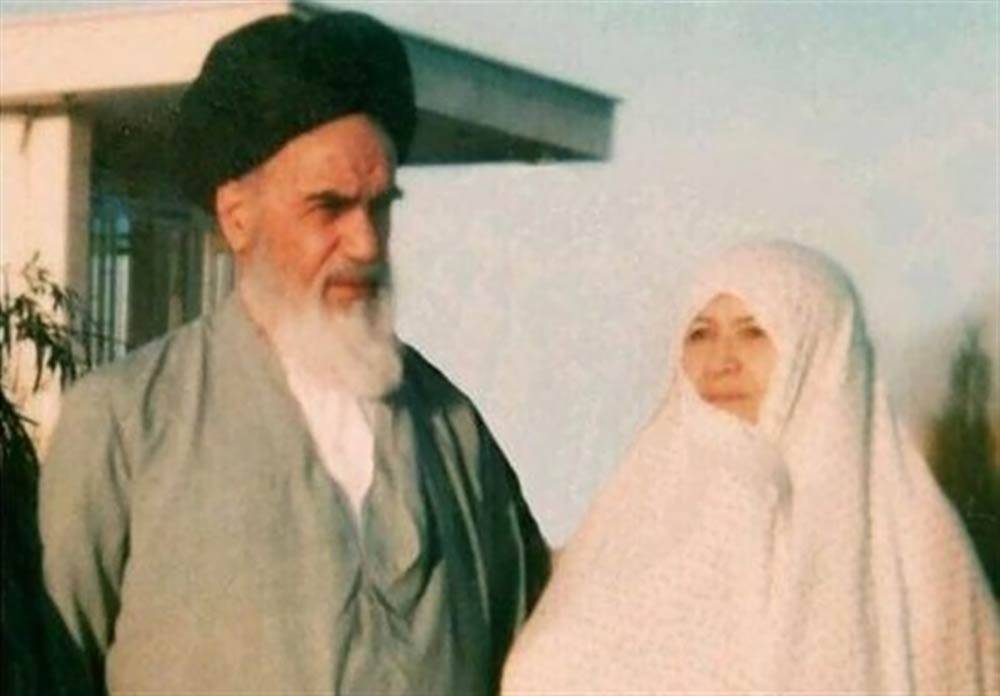
The once spoiled young woman spent some difficult months after she got married. Their monthly salary, which came from the wealthy Khomeini family in the city of Khomein, was equivalent to how much Khadija’s shoes cost before her marriage. The total salary was 6 tomans, and the rent for their house alone cost 3 tomans. Khadija was alone all day while Ruhollah was busy studying either at home or at the religious school, but her life changed following the birth of Mostafa, her first son, followed by the birth of her other children.
In all, Khomeini and his wife had eight children, three sons and five daughters. Three of the children died while they were still young, and the five survived: Mostafa, Sadiqeh, Farideh, Zahra, and Ahmad.
Because she was both strong and independent in character and her decisions, she tells of an instance that happened in the beginning of their shared life in Qom, when a train station was set to be opened for the first time in the city. Ruhollah had been outside the house, having said that Khadija should stay at home during his absence. But, excited to see the station, she went there alone, and when she got home her husband was back. She told him she was at the station. He said: But I had told you not to go! She replied: But I went.
Khadija carried on with this way of life — which she was able to endure with her love for her husband and his mutual love and respect for her — until the death of a prominent religious authority in Qom at the time, Ayatollah Boroujerdi. Following his death, Boroujerdi was replaced by Khomeini, and the Shah visited the city of Qom and gave a speech against clergymen and religious figures. From here began Khomeini’s activity against Shah Muhammad Reza Pahlavi, both officially and publicly.
Khadija’s life entered a new stage, with their house turning into a headquarters of sorts for the supporters and advocates of Ruhollah, as well as meetings and speeches against the Shah. Later Khomeini was subjected to a series of arrests, was imprisoned, and in 1965 was exiled with his son Mostafa to the Turkish city of Bursa, and then to Najaf. Khadija joined her husband and son in Najaf to start a life that was much more difficult than her life in Qom. She had to leave behind everything that linked her to Iran, moving away from her family, friends, and relatives.
Khadija Khomeini had, according to her relatives’ description, a strong and independent personality, doing what she wanted without the slightest concern for others’ opinion. She read books, poetry and traveled extensively
“The house was very small and did not even have the slightest means or resources; We had no refrigerator in the house and no phone to call my family. Ruhollah refused the idea of us having a luxurious life or one better than the lives of the people at that time. In Najaf, the heat was unbearable. My skin would burn from the extreme heat. One night I woke up crying and Ruhullah asked me: What is wrong? I told him: I don’t want you to buy me a bed. Just agree to let me buy one myself so I can rid myself of this hell!”.
The real hell that befell Khadija’s life came after the death of her son Mostafa, who she loved dearly, he had been poisoned. This shock deeply affected Khadija, and she spent some difficult days until she finally joined her husband, who had been exiled to France along with his son Ahmad. Khadija spoke of her time there, calling them beautiful days, especially given how lively their house was, overflowing daily with revolutionary young men supporting Khomeini and opposing the Shah. In addition, she mentioned how her knowledge of France and the French culture and language helped, noting the good climate in France.
Returning to Iran
In February 1979, Khomeini returned to Tehran with his son Ahmad, and Khadija arrived a few days later. Khomeini’s activities intensified, and the country entered a period that led to the success of the revolution and to major developments in the country and in the life of Khomeini and his family. Khadija spoke in interviews about the great pain and fatigue she saw in her husband, who, whenever she would urge to cut back on his activities, would tell her that there is a duty on his shoulders that he must do.
Two years following the triumph of the revolution in Iran, the Iran-Iraq War began. During the war, in 1986, Khomeini was hospitalized after suffering from a heart attack. One year after the end of the war, Khomeini was admitted to hospital for a second time and died, leaving ‘Quds-Iran’ to face a second major shock. The third great shock for her was the death of her son Ahmad in 1994 under mysterious circumstances.
The relationship with Ruhollah
Although she did not agree with the extent of her husband’s political activity, and didn’t agree with him on all his positions and opinions, whether they were religious or political, she stood by him at every stage, and tried to look after her family and safeguard her home. She became well known for her patience and serene countenance, as well as her attempts to keep her home quiet and away from any political turmoil. She had, according to her relatives’ description of her, a very strong and independent personality, doing what she wanted without the slightest concern for the opinions of others. She also read books, poetry, followed the news, traveled a lot, and held meetings and sit-downs with the families of some figures, away from any political blocs or interference.
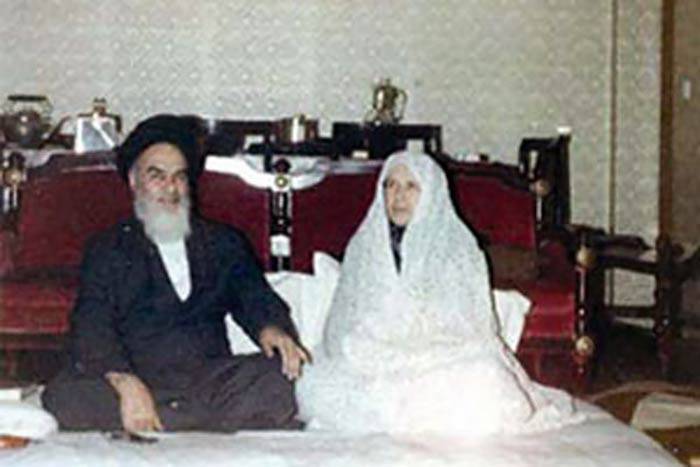
“Mother was deeply respected and honored by my father, and he loved her very much. He did not conceal his love and affection for his wife and would openly express it to her in front of others. He used to urge us to respect her and always be at her service, and he would not begin eating until after our mother came to join us. During her travels or her absence from home, he used to get very sad and would ask about her repeatedly,” says Zahra, Khomeini’s daughter in the film “The Grand Lady of Iran”.
Fatima Tabatabai, Ahmad’s wife and daughter-in-law of Khomeini, confirms that ‘Quds-Iran’, despite her good relationship with her husband, used to sometimes oppose his decisions. Once, following the success of the revolution and amid Khomeini’s emphasis on the need to lead a simple life as the family of the ‘Leader of the Revolution’, ‘Quds-Iran’ decided to travel to France or Germany, in accordance with the doctors’ recommendations, to perform an operation on her eye, but Khomeini refused. ‘Quds-Iran’ replied, “I have endured all the hardships in my life with you to this day, but I will not accept this decision of yours.” So Khomeini asked his son Ahmad to prepare his mother’s trip to France for treatment.
The death of Quds-Iran
Despite all the developments she witnessed in her life, and losing her husband, two sons, and other members of her family, she remained — as described — very strong, never expressing her sadness and pain. She kept trying to enjoy the presence of her children and grandchildren near her. Following a period of illness that lasted for seven months, she died on Nowruz (the Persian New Year) in March 21, 2009 in a hospital in Tehran, and her body was buried next to her husband.
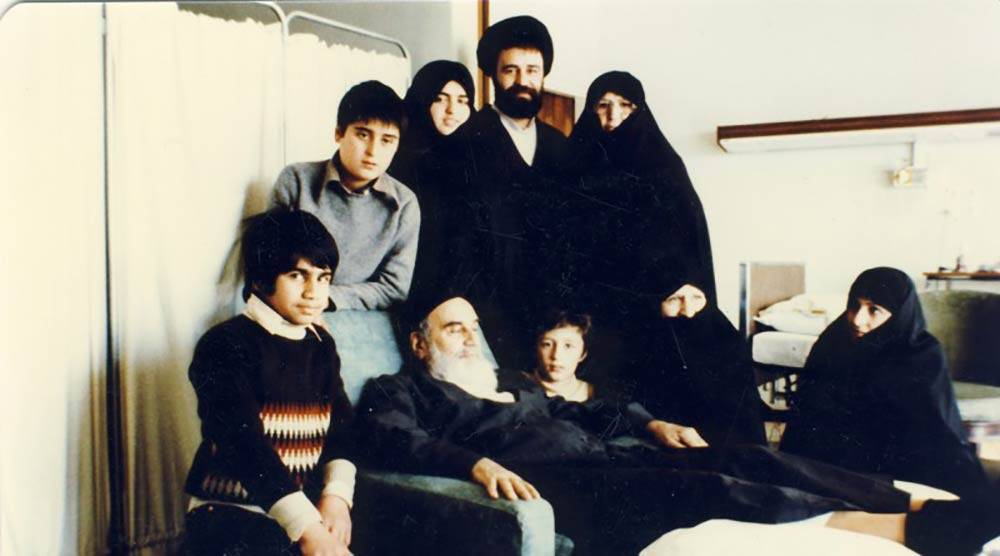
In the documentary, the maid of Khomeini’s wife says: “The lady had a room that she cared a lot about, containing the things that were important to her, especially a small box, and she always made sure that the room was locked. Following her death, her daughters said, “Open the box and let’s see what’s the valuable thing in the box that our mother was so keen on preserving! We opened the box, and after removing several pieces of paper and cloth, we reached the valuable item in question. It was a picture of Ahmad and Mostafa, her two deceased sons.”
Raseef22 is a not for profit entity. Our focus is on quality journalism. Every contribution to the NasRaseef membership goes directly towards journalism production. We stand independent, not accepting corporate sponsorships, sponsored content or political funding.
Support our mission to keep Raseef22 available to all readers by clicking here!
Interested in writing with us? Check our pitch process here!
